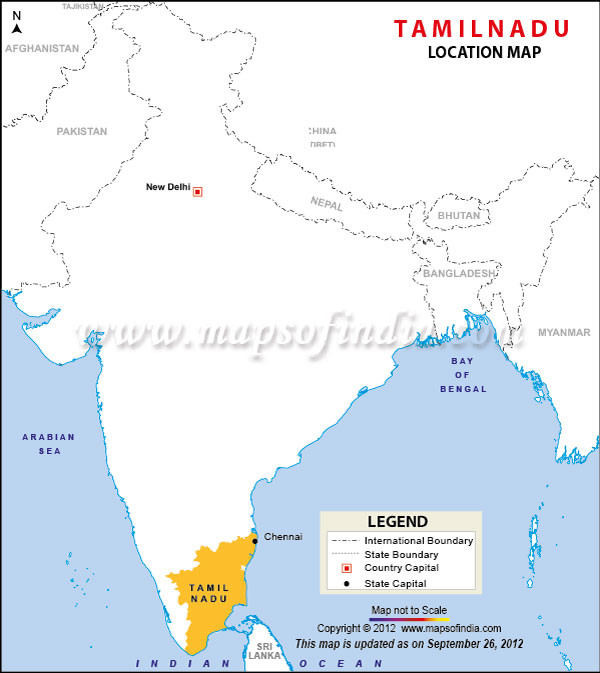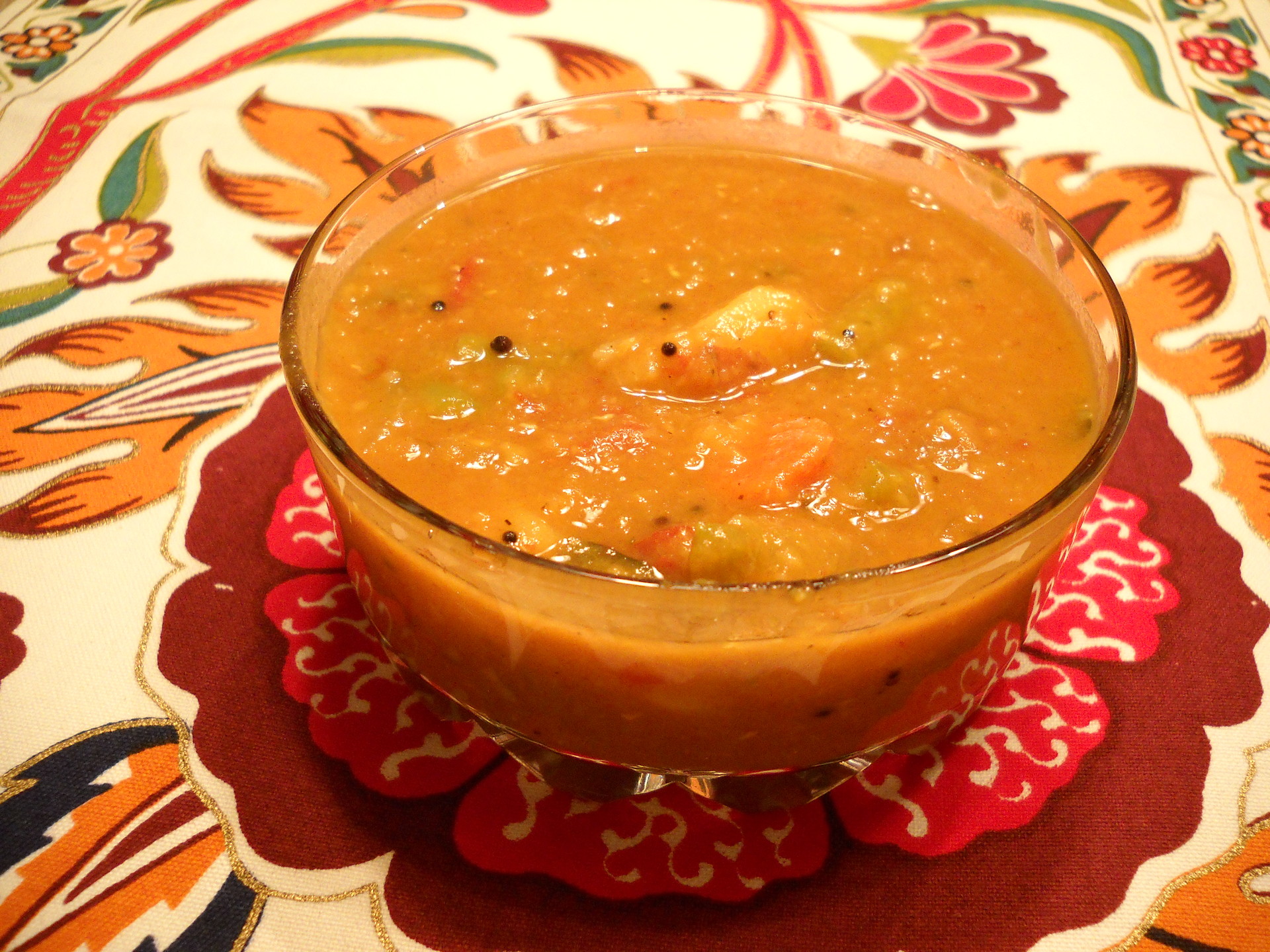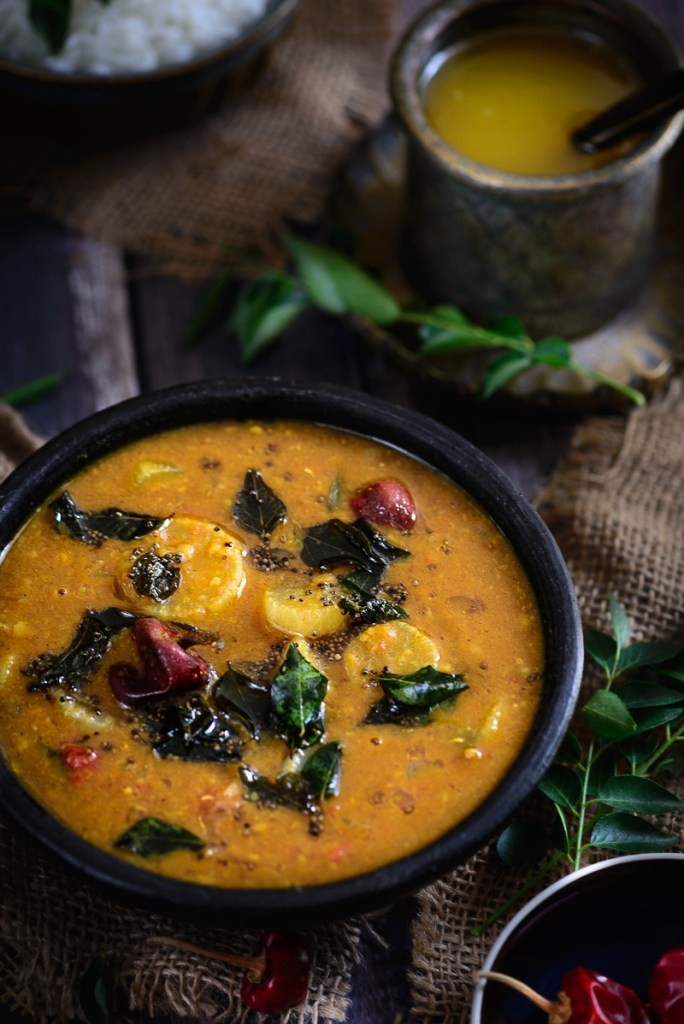Sambhar : Vegetable Stew/Chowder
Native to : Tamil Nadu, South India

Image Credit : MapsOfIndia | Some unconfirmed sources trace the origins of Sambhar to neighbouring South Indian states, but it is widely accepted that Sambhar originated as a royal dish in the state of Tamil Nadu.
Sambhar is a companion of quite a few South Indian dishes - like Dosa, apart from being a healthy staple food of the region.
What is Sambhar?
Sambhar is a healthy vegetarian stew or chowder which is lentils based - so we have the proteins, it is cooked in tamarind broth - so a very interesting and unique flavor, and has a large number of vegetables in it. It is very healthy and tasty at the same time!

Image Credit : HoneyBeeCooksJackfruit @ wordpress | A bowl of delicious-looking sambhar
Recipe
To cook Sambhar, the following ingredients are generally used:
- Potato
- Tomato
- Pumpkin
- Carrot
- Brinjal (a kind of eggplant, easily replaceable by an eggplant)
- Radish
- Onion
- Tamarind pulp (1/3 cup)
- Turmeric
- Mustard seeds
- Dry red chili
- Red chili powder
- Arhar/Toor Daal (Pigeon Pea) (1/2 a cup)
- Oil
- Curry leaves
- Salt (to taste)
- Fenugreek seeds
- Mustard seeds
- Asafoetida
- Sambhar powder (a unique masala mixture)
*The total amount of all the chopped vegetables would be around 1 to 1.5 cups.

Image Credit : WhiskAffair | A plate of sambhar served with a traditional outlook. The "tadka" - a (highly) flavor enhancing practice that has been discussed later below in this article, is prominent in this picture as a lot of condiments are seen floating over the sambhar.
To prepare Sambhar, follow these steps :
- Cook the daal (lentils) in 2 to 2.5 cups of water in a pressure cooker for around 8 to 9 whistles. The point is to make it soft.
- Next, add the chopped vegetables and the spices - turmeric powder, red chili powder and asafoetida along with salt. Add another cup of water.
- Put the pressure cooker's lid on place again for just a single whistle. That's sufficient for the vegetables for now.
- Remove the lid when the pressure inside the cooker has dialed down, and add sambhar powder and the tamarind pulp.
- Now, it's time for the "tadka" - which is a term used for adding oil-roasted condiments to a liquid dish to give it immense flavour and essence. For this tadka, heat some oil in a small frying pan and add some mustard seeds. When they craackle, add fenugreek seeds, asfoetida, a dry red chili and a few curry leaves. When the red chili becomes a bit darker and seems crisp, it is done!
- Put this hot tadka into the stew and close the lid so that the aroma stays in the dish.

Image Credit : PlatedRomance @ wordpress | A typical tadka with dry red chili and curry leaves clearly visible
After a little more than 5 minutes, open the lid, stir and enjoy!
Photo gallery
Want to have your own Erasmus blog?
If you are experiencing living abroad, you're an avid traveller or want to promote the city where you live... create your own blog and share your adventures!
I want to create my Erasmus blog! →







Comments (0 comments)